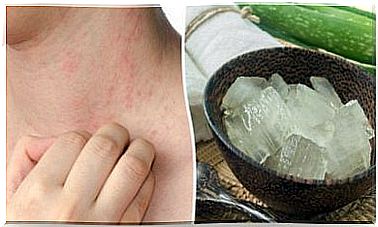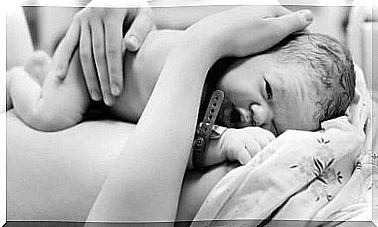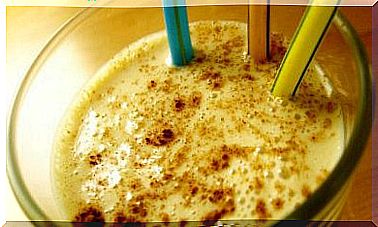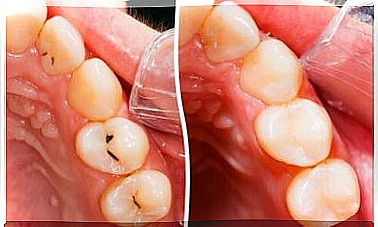Hip Osteoarthritis – Characteristics And Symptoms
Hip osteoarthritis develops slowly and can affect both hips. The most common symptom is pain, which can be relieved by rest and relaxation. In today’s article, you’ll find out everything you need to know about this condition: its causes, symptoms, treatment options, and what you can do to prevent it.
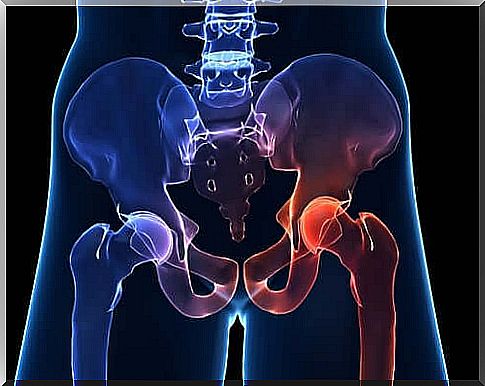
A Osteoarthritis is characterized by the wear of the hyaline cartilage of a joint at each end. This cartilage covers the latter to protect it from friction with other bones. In addition, the cartilage also cushions the impact under stress.
Due to trauma, a genetic defect, or improper stress on the joint, its ability to retain water from the cartilage is reduced. This leads to progressive wear and tear on the affected joint, which ultimately leads to bone deformation. This condition is known as hip osteoarthritis , and it often causes pain and loss of mobility.
Hip osteoarthritis – causes and risk factors
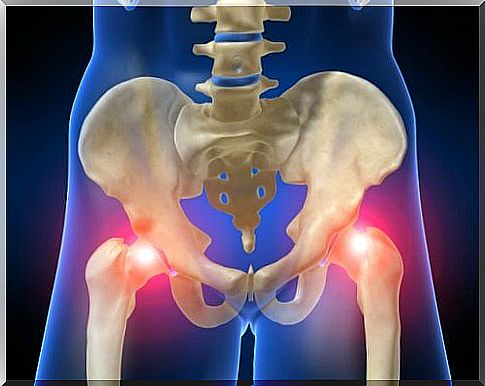
The causes of hip arthrosis are diverse, as there are several factors that can promote the development. For example, studies have confirmed that hereditary predisposition is partly responsible for hip wear and tear.
In addition, deformations of limbs are also a predisposing factor, especially when the malformations occur in the lower extremities that support the body weight. As a result , being overweight puts strain on the hips and knees, increasing the possibility of degeneration.
Extremely intense sporting activities and certain heavy work can also promote the development of osteoarthritis, especially in the lower extremities. In addition, some falls and blows can also cause premature joint wear, as a fracture could displace the joint.
Generally, this condition manifests itself in adults from the age of 50 to 60 years. Sometimes hip osteoarthritis also occurs in young people. However, these are rather exceptional cases.
Symptoms of hip osteoarthritis
The main symptom of hip osteoarthritis is pain and it often manifests itself in the groin, thigh, inner thigh, and it can even occur in the knees. However, the pain usually occurs with physical activity and can mainly be relieved by rest. It is a type of “mechanical pain” that is different from inflammatory joint pain.
In contrast, the inflammatory joint pain persists even in phases of physical rest. Osteoarthritis can also affect both hips. But usually the pain only occurs on one side.
Another symptom of hip osteoarthritis is restricted mobility. As a result, people often find it difficult to carry out typical everyday activities.
Both the pain and the restriction of movement are progressive, although the development is different for each person. Lameness and a certain stiffness are other symptoms of hip osteoarthritis. This manifests itself in a characteristic limp when both joints are affected.
Hip osteoarthritis develops progressively over the years, depending on your level of activity. Still, many people can lead normal lives if they receive the right treatment and follow the doctor’s instructions.
diagnosis
First of all, the doctor diagnoses hip osteoarthritis by asking the patient about their symptoms and complaints. The hip joints and their mobility are also examined. This will allow a specialist to assess the severity of the osteoarthritis that the patient has.
In addition, a hip x-ray will be taken to confirm the diagnosis. In this way, the doctor can recognize the typical changes that hip arthrosis causes. He can examine the hip joints for signs of wear and tear and determine the severity of the osteoarthritis.
However, there is no direct relationship between the intensity of wear and the symptoms. As a result, a badly worn hip can be stiffer but still painless and vice versa.
Treatment of hip osteoarthritis

Treatment of osteoarthritis aims to relieve pain and treat functional impairments. Because of this, the doctor can prescribe certain medications for his patient.
- Pain relievers are the most commonly used drugs, especially acetaminophen. These drugs reduce pain and improve existing joint stiffness.
- In addition, non-steroidal anti-inflammatory drugs are used when the pain is more acute and intense.
- Chondroprotectors are part of the joint cartilage and also have a pain-relieving effect. Glucosamine and chondroitin sulfate belong to this group.
- It is also possible to inject anti-inflammatory substances directly into the joint. This method is called inter-articular therapy or infiltration. In most cases, glucocorticoids and hyaluronic acid are injected.
In addition, your doctor will recommend a healthier lifestyle and, if necessary, prescribe some measures to alleviate the symptoms. For example, applying cold compresses and physiotherapy.
According to Dr. Alexandra Villa-Forte “The application of cold (such as ice) can help relieve the pain caused by joint inflammation.”
Good habits are the best support for your daily routine
Adopting and maintaining good posture, avoiding excessive or improper stress on the joints, regular sporting activity, measures to avoid or reverse obesity and wearing suitable footwear are some of the measures recommended by experts for the well-being of patients with hip osteoarthritis.
However, you should also note that the type and extent of sporting and physical activity can vary from person to person. Therefore, you should always follow the instructions of your treating doctor.
